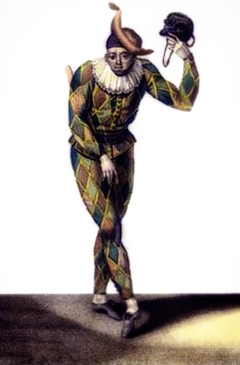I don’t think it would be truthful to make a claim that acting has not changed in the past twenty years. However, I do think I can argue that the transformations in the ways in which we think about texts for performance have accelerated more rapidly than the ways in which we approach acting.
I find two fundamental systems of theorizing human behavior inform my assumptions of acting: the idea of the individual psychological subject reified by the actor’s assimilation of the character of the drama into her or his on subjectivity and the idea of the group as defined by Gestalt psychology that demands that the students explore the dynamics of the here and now constituted by the group itself.
In terms of the ways in which schools or programs structure the sequence of an acting curriculum, the focus upon the training of the actor’s body and imagination in the context of work functions as an introductory material. The notion of building a “text-based” character constitutes a later stage in the sequence.
In terms of pedagogy and directing practice, the improvistory exercise often introduces the work with the text although the sequence may proceed from the determination of an emotional scenario, to the improvisation of a moment from that scenario, to the rehearsal of that moment with text.
This use of improvisation often builds upon techniques gained in the introductory or fundamental courses, but this use of improvisation differs from the theater games system in which the actor responds from the coordinates of his or her own persona or an invention drawn from his/her own imagination, not from a text.
This last statement needs some qualification since the situations, emotions, characterizations that actors tend to draw upon in her or his invention tend to come less from the creativity of the actor and more from an increasing stock of situations, conventionalized displays of emotion, and universalized characters that the experience of group work builds. This repertory operates as a kind of backlog of texts to the degree that it functions as a library of representations. As the group develops, they become increasingly more facile in accessing and varying these texts.
One of the issues that I want to confront is the fact that a very significant theoretical apparatus that drives most approaches to acting (I’m thinking specifically in regards to the United States) is the notion that the aesthetic work of the theater is the representation of the real. That assumption becomes extremely problematic when I recognize that I exercise it unselfconsciously.
I assume, for example, that I can recognize when theatrical behavior is real, truthful, grounded in an authentic emotion and, in that sense, natural.
I celebrate the actor’s behavior when I can identify its naturalness. What I don’t always recognize is that what I perceive as natural is not based upon a correlation between the world of my experience and the actor’s behavior but, rather, upon the actor’s implementation (by craft or accident) of a series of conventions that I read as natural.
I also identify as style that which departs from that convention of naturalness: the extended vowel, the sharply articulated consonant, the self-conscious posture, the turning of the leg, any one of a series of artifices that I implement to historicize or distance a performance from the natural.
I recognize, but rarely discuss, the fact that the shorter distance between actor and auditor in film has exposed certain theatrical artifices that I previously read as natural and requires a mode of behavior that was less extended vocally and physically.
I recognize that this shift in the perception of what is natural in film has influenced my reading of stage behavior. The stage actor, now, is perceived as natural when her or his behavior approximates more closely the behavior of the film or video actor. The style reinforced by the dominant media of film and video certainly influences the style of the less popular medium of live performance.


Good post.